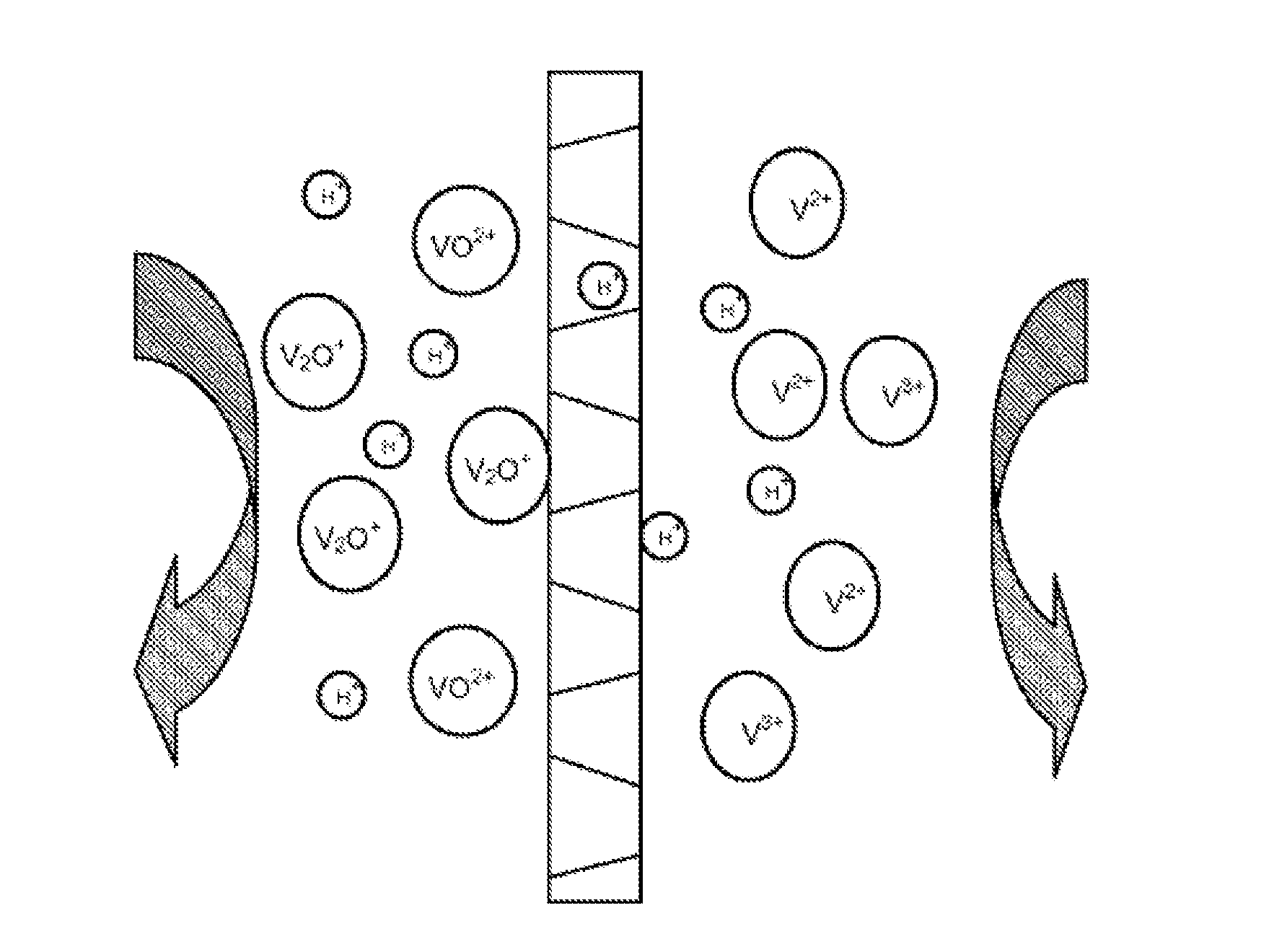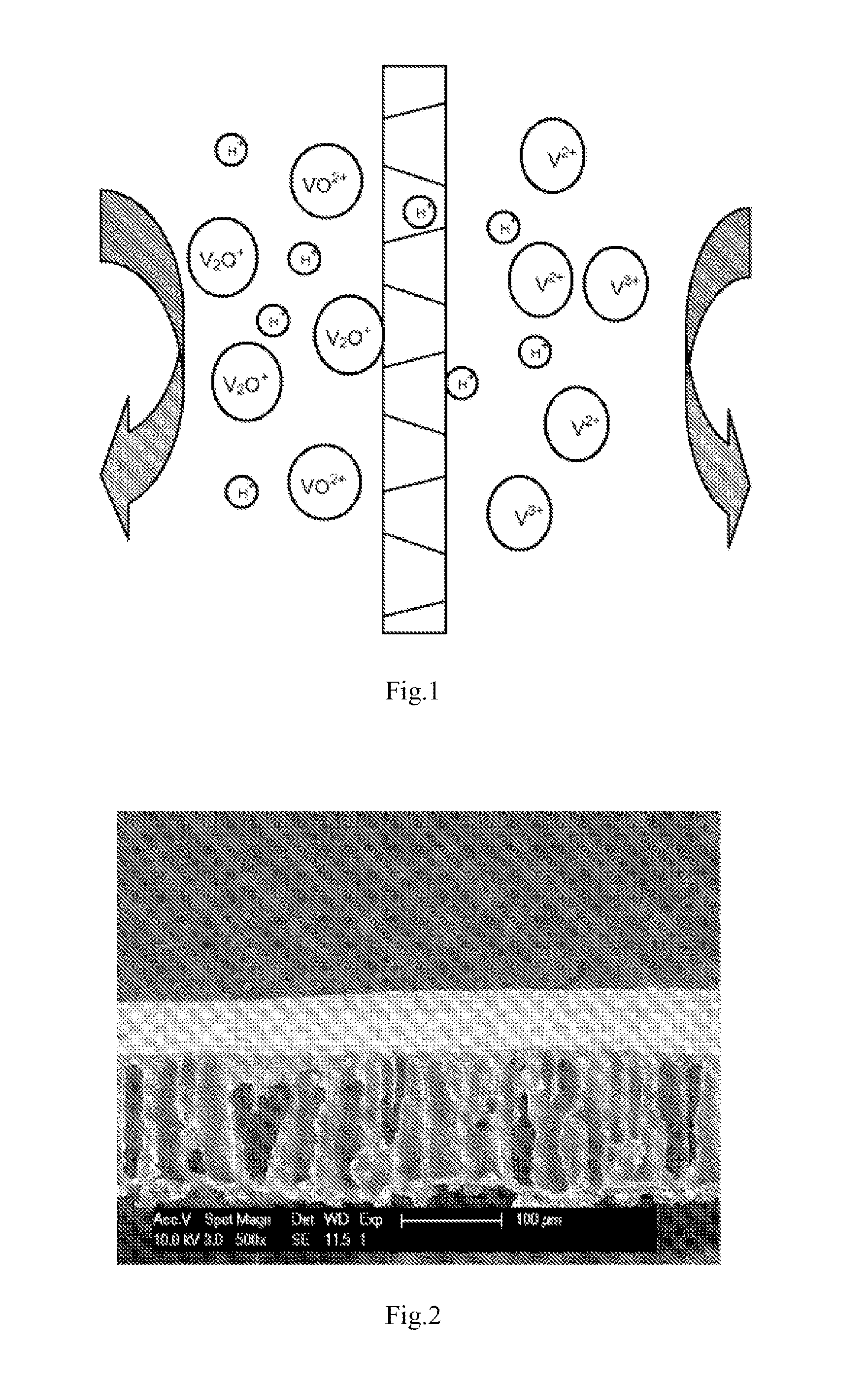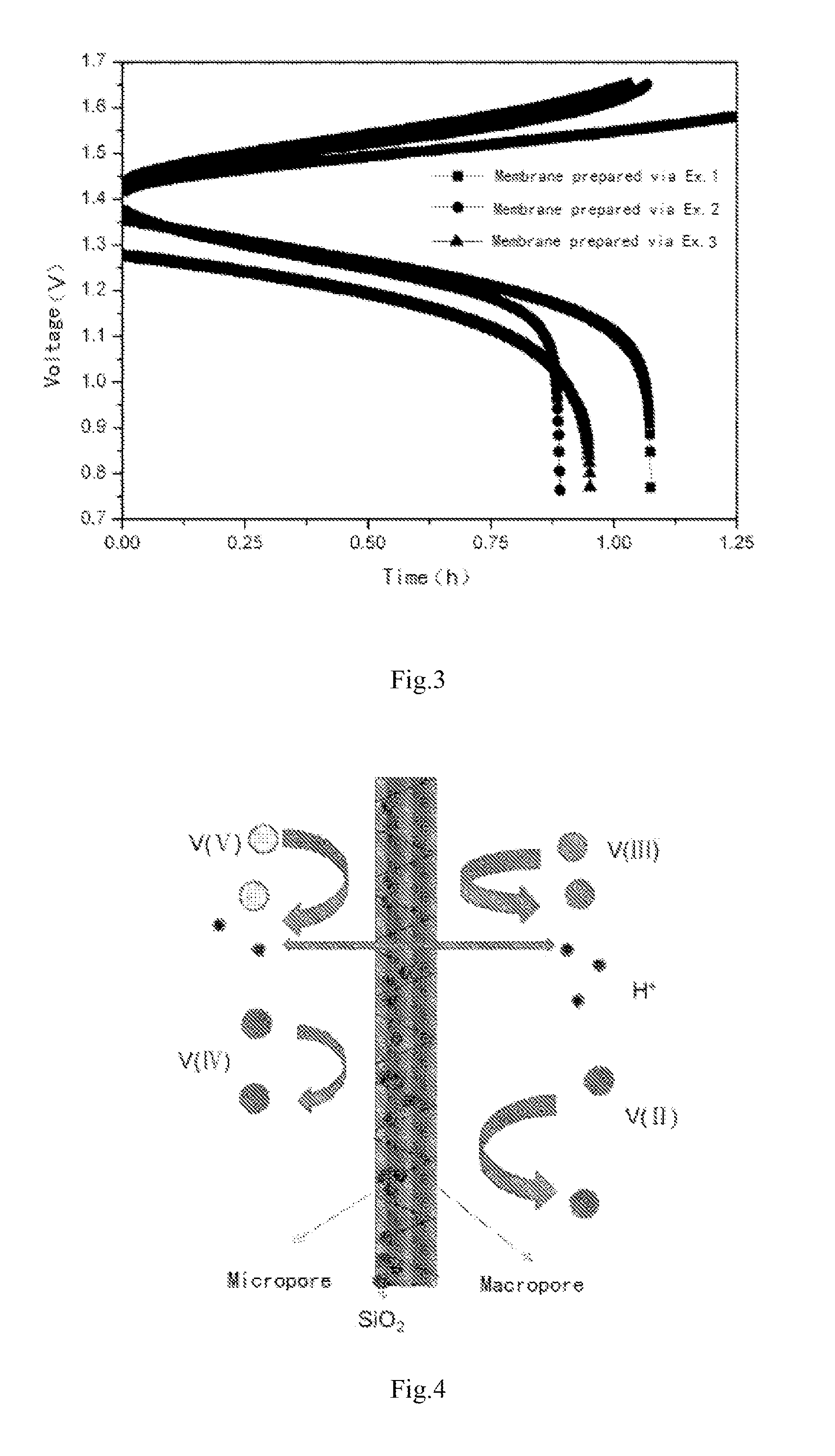Use of porous membrane and composite membrane thereof in redox flow energy storage battery
a technology of porous membranes and energy storage batteries, which is applied in the direction of sustainable manufacturing/processing, cell components, indirect fuel cells, etc., can solve the problems of limiting the commercialization of vfb, low ion selectivity, and high cost of nafion® membranes, so as to avoid the low chemical stability, enhance the membrane vanadium/proton selectivity and ion conductivity, and enhance the membrane vanadium/proton
- Summary
- Abstract
- Description
- Claims
- Application Information
AI Technical Summary
Benefits of technology
Problems solved by technology
Method used
Image
Examples
example 1
[0058]7.5 g PAN was dissolved in 50 mL DMSO and kept stirring for 5 h to form the polymer solution. The polymer solution was cast on a glass plate, immediately immersed into 5 L water and solidified for 5 min to form the porous membrane with the thickness of 500 μm.
[0059]The cross-section morphology of the prepared membrane showed uniformly porous structure, as given in FIG. 2. The membrane was fabricated in a VRB single cell with carbon felt electrodes and graphite current collectors. The concentrations of vanadium ions and H2SO4 in the electrolyte solution were 3 M. The efficient area of the membrane was 9 cm2 and the testing current density was 80 mA cm2. The coulombic efficiency (CE), voltage efficiency (VE) and energy efficiency (EE) were 66.1%, 81.1% and 53.6%, respectively.
example 2
[0060]7.5 g PAN was dissolved in the mixed solvent consisting of 30 mL DMSO and 20 mL THF and kept stirred for 5 h to form the polymer solution. The polymer solution was cast on a glass plate. After evaporation for 10 s, the plate was immediately immersed into 5 L water and solidified for 10 min to form the porous membrane with the thickness of 500 μm.
[0061]The membrane was fabricated in a VRB single cell with carbon felt electrodes and graphite current collectors. The efficient area of the membrane was 9 cm2 and the testing current density was 80 mA cm−2. The concentrations of vanadium ions and H2SO4 in the electrolyte solution were 1.5 M and 3 M respectively. The coulombic efficiency (CE), voltage efficiency (VE) and energy efficiency (EE) were 80.7%, 82.1% and 66.2%, respectively.
example 3
[0062]7.5 g PAN was dissolved in the mixed solvent consisting of 30 mL DMSO and 20 mL THF and kept stirred for 5 h to form the polymer solution. The polymer solution was cast on a glass plate. After evaporation for 20 s, the plate was immediately immersed into 5 L water and solidified for 10 min to form the porous membrane with the thickness of 500 μm.
[0063]The membrane was fabricated in a VRB single cell with carbon felt electrodes and graphite current collectors. The efficient area of the membrane was 9 cm2 and the testing current density was 80 mA cm−2. The concentrations of vanadium ions and H2SO4 in the electrolyte solution were 1.5 M and 3 M respectively. The coulombic efficiency (CE), voltage efficiency (VE) and energy efficiency (EE) were 91.8%, 81.5% and 75%, respectively.
[0064]Seen from the single cell performance of Example 1, 2 and 3 given in FIG. 3, as the pore size of membrane decreases, the CE increases, the EE keep the same value and hence the EE also increases. Thus...
PUM
| Property | Measurement | Unit |
|---|---|---|
| thickness | aaaaa | aaaaa |
| porosity | aaaaa | aaaaa |
| thickness | aaaaa | aaaaa |
Abstract
Description
Claims
Application Information
 Login to View More
Login to View More - R&D
- Intellectual Property
- Life Sciences
- Materials
- Tech Scout
- Unparalleled Data Quality
- Higher Quality Content
- 60% Fewer Hallucinations
Browse by: Latest US Patents, China's latest patents, Technical Efficacy Thesaurus, Application Domain, Technology Topic, Popular Technical Reports.
© 2025 PatSnap. All rights reserved.Legal|Privacy policy|Modern Slavery Act Transparency Statement|Sitemap|About US| Contact US: help@patsnap.com



